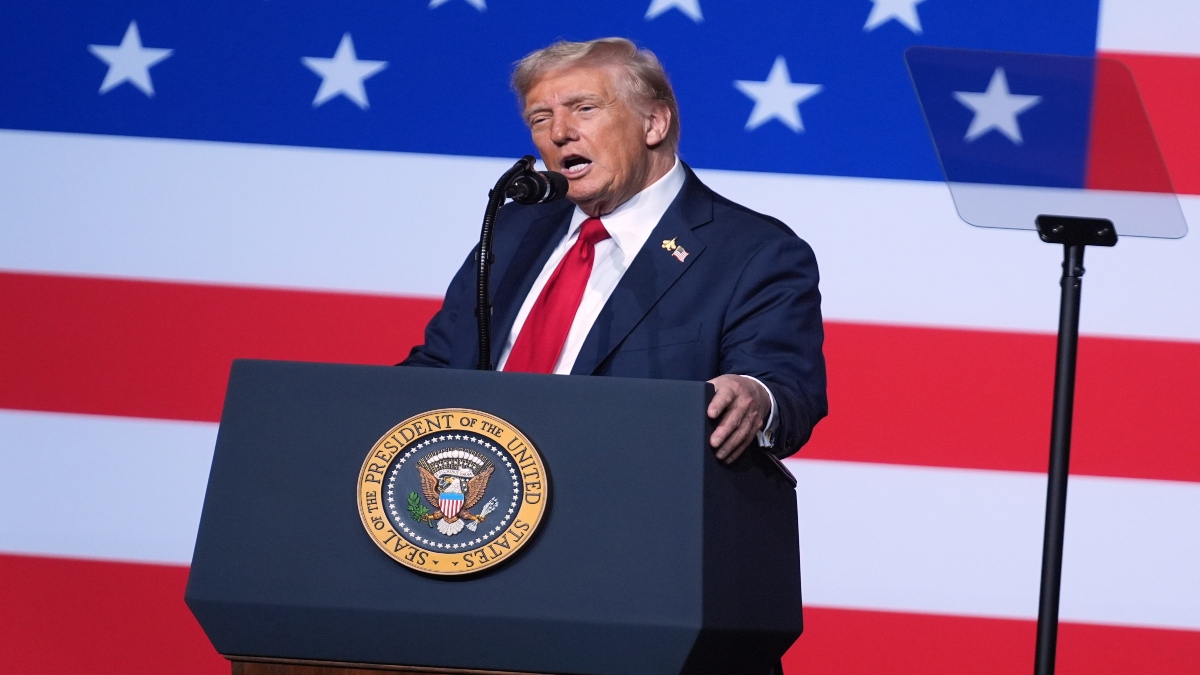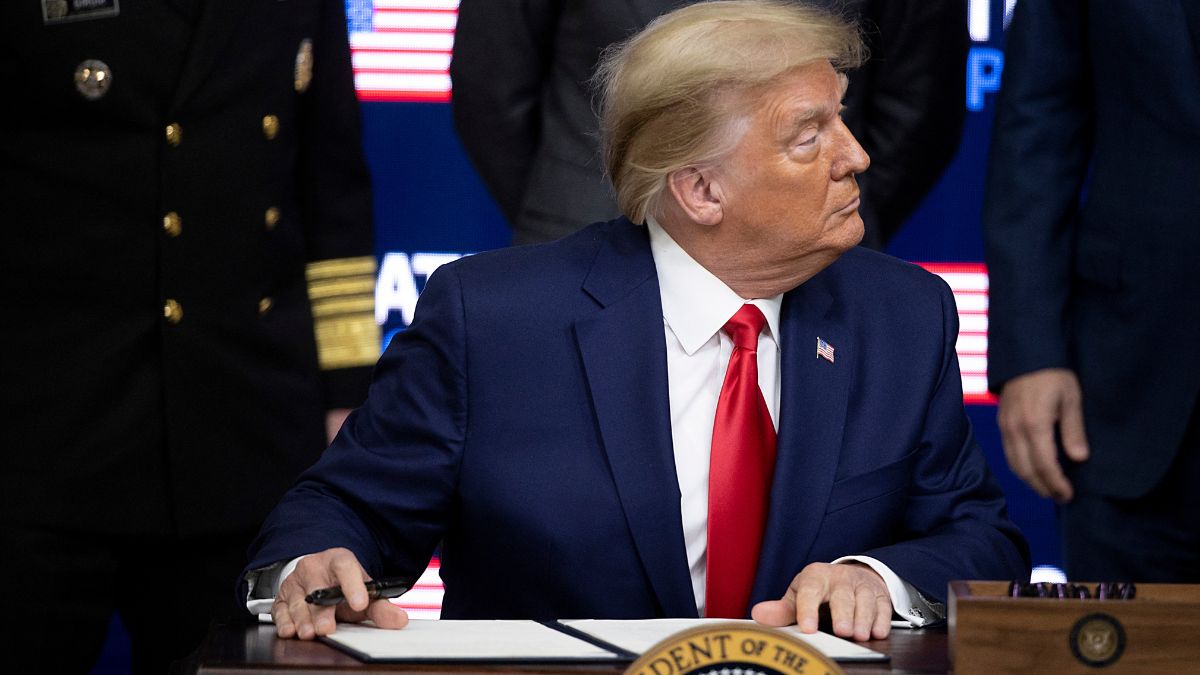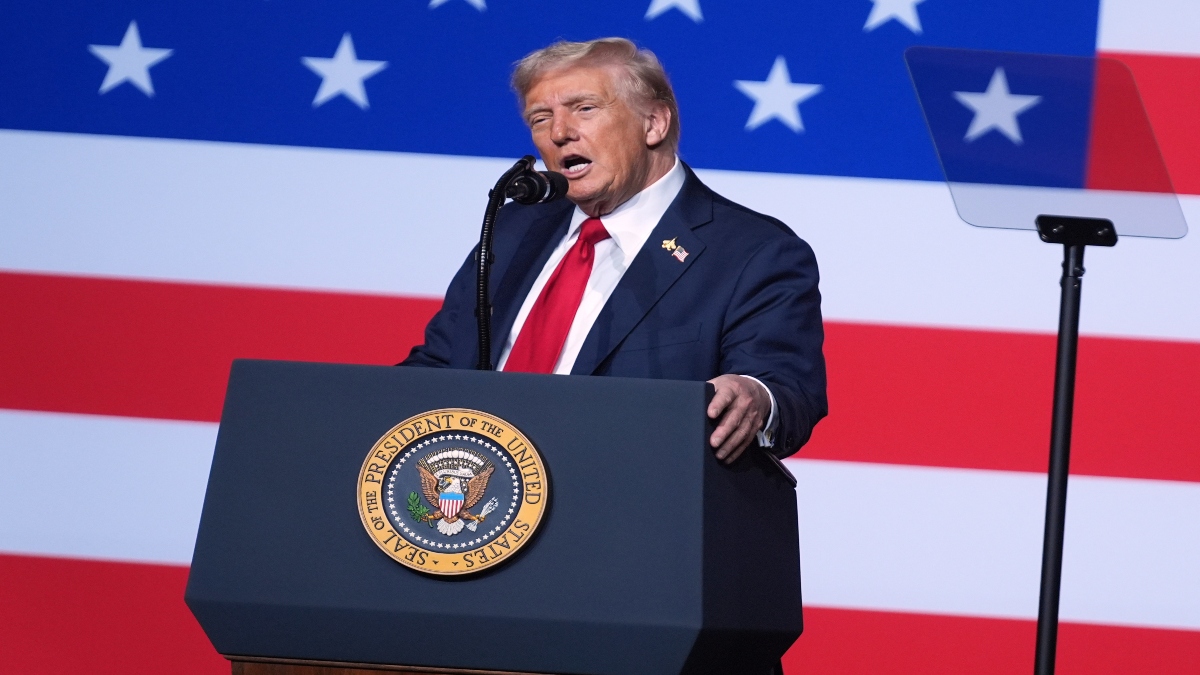The United States is once again on the edge of a government shutdown time runs out to strike a funding deal.
With the current fiscal year ending at midnight on Tuesday, lawmakers are under mounting pressure to avert a disruption that could affect millions of Americans, halt federal services, and shake the US economy.
This year’s potential shutdown stands out not only because of the stakes involved but also due to the clash between US President Donald Trump and congressional Democrats over healthcare and federal spending.
While shutdowns have become an almost routine occurrence in recent decades, the current standoff carries unique challenges and consequences that go beyond past disputes.
US Vice President JD Vance expressed scepticism about reaching a deal, bluntly stating, “I think we’re headed to a shutdown.”
What is the crisis at US Congress?
At the heart of the crisis is Congress’ failure to pass the 12 annual appropriations bills required to fund most federal agencies for the new fiscal year, which begins October 1.
Traditionally, these bills are bundled into a single omnibus package to expedite the process. However, as of now, none have been enacted.
Earlier this year, a large funding bill passed by the Republican-led Congress provided money for certain key departments, including the Department of Defence and the Department of Homeland Security.
These agencies would continue functioning even if other parts of the government run out of money. For most others, however, operations would be disrupted once funding lapses.
Ahead of the deadline, both parties have floated proposals for temporary measures to keep the government open while negotiations continue. Democrats suggested a short-term extension lasting seven to ten days, while Republicans have pushed for a stopgap measure extending funding through November 21.
Neither side has agreed to the other’s timeline.
Senate Democratic Leader Chuck Schumer, highlighted the depth of the divide, remarked that the two sides “have very large differences.”
House Democratic Leader Hakeem Jeffries echoed this sentiment, stressing that Democrats will not support a plan that undermines healthcare protections.
Republicans have scheduled a vote for Tuesday on their temporary funding proposal, even though it has already failed once in the Senate. As the deadline approaches, each side is preparing to blame the other should the government shut down.
What is the core of the dispute?
The central issue driving this year’s funding battle is the future of certain healthcare subsidies under the Affordable Care Act (ACA). These subsidies, which help reduce health insurance premiums for roughly 24 million Americans, are set to expire at the end of this year.
Democrats are pushing to make these tax credits permanent, arguing that failing to do so will cause premiums to spike just as the open enrolment period begins on November 1.
Jeffries made the party’s position clear, stating, “We believe that simply accepting the Republican plan to continue to assault and gut healthcare is unacceptable.”
Republicans, however, insist that healthcare policy should not be tied to government funding. They are open to discussing ACA subsidies separately, but they do not want those negotiations to determine whether the government stays open.
Senate Majority Leader John Thune urged Democrats to separate the issues, saying, “We can have that conversation. But before we do, release the hostage. Set the American people free. Keep the government open.”
This disagreement has become particularly heated as both parties position themselves for the 2026 midterm elections, where control of Congress will be at stake.
For Democrats, securing ACA subsidies is a priority that energises their base. Republicans, meanwhile, accuse Democrats of using the threat of a shutdown as leverage to achieve policy goals outside the budget process.
What happens during a shutdown?
If Congress fails to pass a funding measure by midnight Tuesday, many parts of the federal government will either partially or fully close.
Each federal agency is required to have a contingency plan outlining how it will operate during a lapse in funding.
Essential vs Non-Essential Services
During a shutdown, agencies must distinguish between essential and non-essential functions. Essential employees are required to continue working without pay until funding is restored, while non-essential employees are furloughed.
Essential workers include active-duty military personnel, federal law enforcement officers, Transportation Security Administration (TSA) agents, and air traffic controllers. Employees at federally funded hospitals also fall into this category.
Non-essential employees are placed on temporary unpaid leave. Under a 2019 law, they are guaranteed back pay once the government reopens.
This time, however, the situation could be different. The Trump administration has threatened not only furloughs but also the possibility of permanent layoffs, which would add uncertainty for many federal workers.
Services likely to be affected
Several government services would face immediate disruptions:
Air travel: While air traffic controllers and TSA agents must keep working, delayed paychecks could lead to staffing shortages if employees protest by not reporting to work.
National parks: These sites have historically been affected during shutdowns. In the 2013 shutdown, many parks were completely closed. During the 2018–2019 shutdown, some remained open but with limited staff, resulting in vandalism and reduced services.
Small business grants and federal courts: Many of these functions depend on annual appropriations and could be delayed or halted entirely.
Postal service: The U.S. Postal Service will continue operating since it is self-funded.
Programmes such as Social Security, Medicare, and Medicaid will continue issuing payments during a shutdown because they are funded through permanent appropriations.
However, the agencies overseeing these programmes could face staff shortages, potentially causing delays in services like enrolling new beneficiaries or resolving claims.
What is the scale of funding at stake?
The dispute centres on $1.7 trillion in discretionary spending, which covers the operating budgets of federal agencies.
This amount represents roughly a quarter of the government’s total $7 trillion budget.
The rest is largely dedicated to entitlement programmes and interest payments on the growing national debt, which currently stands at approximately $37.5 trillion.
Only a handful of federal agencies have released detailed shutdown plans so far, adding to the uncertainty about how different parts of the government would function in the event of a lapse.
On Monday evening, the White House issued an executive order extending the life of more than 20 federal advisory committees through 2027.
These committees provide input on areas such as national security and trade, but it remains unclear how they would continue operating if their funding is interrupted.
What do past US shutdowns tell us?
Government shutdowns have become more frequent over the past three decades, driven by divided government, close electoral margins, and increasingly partisan politics.
Since 1981, there have been 14 partial shutdowns.
The most significant in recent history was the 35-day shutdown spanning late 2018 and early 2019, which also occurred during Trump’s first presidency.
That shutdown affected nine executive branch departments and about 800,000 federal employees. Many workers were either furloughed or forced to work without pay, causing widespread disruption and public anger.
Shutdowns typically create ripple effects across the economy. Businesses that rely on federal contracts face delays, and government workers reduce spending due to missed paychecks.
National parks and museums close or operate with reduced services, affecting tourism and local economies.
Why is this year’s shutdown different?
This year’s standoff is unfolding against a highly charged political backdrop.
Trump and his Republican allies control both chambers of Congress, but Democrats hold enough seats in the Senate to block legislation through the filibuster, which requires 60 votes for most major bills.
Trump has taken a hardline stance, showing little interest in compromise. Democrats accuse him of using the threat of a shutdown to expand executive power and reshape the federal workforce.
In recent months, Trump has openly challenged spending decisions made by Congress and even refused to allocate funds approved for programmes he opposes.
Vance has criticised Democrats’ tactics, arguing that they are using the potential shutdown as leverage, “They had some ideas that I actually thought were reasonable, and they had some ideas that the president thought was reasonable. What’s not reasonable is to hold those ideas as leverage and to shut down the government.”
For Democrats, the stakes are high. Failing to secure ACA subsidies could hurt their base ahead of the midterms, but triggering a shutdown carries its own risks.
Public opinion often turns against the party seen as responsible for the impasse. Democratic aides have privately expressed concern that they could face a backlash if they are perceived as obstructing simply because they oppose Trump.
Republicans, meanwhile, are aware of the potential political fallout if they are blamed for the shutdown, particularly since Trump has made no secret of his willingness to let the government close if his demands are not met.
As the deadline approaches, both sides are bracing for a political showdown.
Also Watch:
With inputs from agencies


)

)
)
)
)
)
)
)
)



